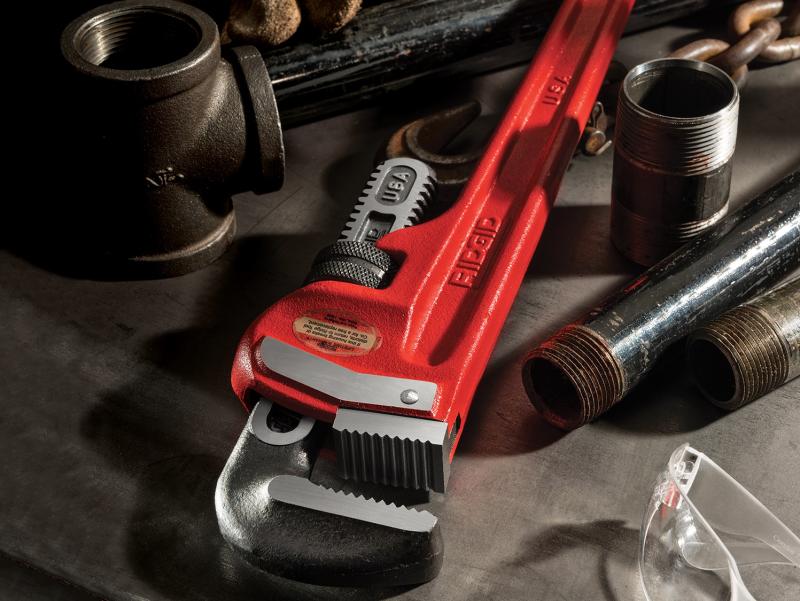There's no doubt both ductile cast iron and steel have impressive mechanical properties. Those properties make them incredibly useful materials with a host of applications. But, is one "better" when it comes to choosing ductile iron vs. steel for your next project? Are there categories or conditions in which one of these alloys outperforms the other?
That's our focus in this post. We look at what the difference is between iron and steel and why, based on performance requirements, ductile iron may represent a better value than steel in many instances.
We begin with an overview of the composition of steel vs. ductile iron. That's followed by a head-to-head comparison of their mechanical properties and cost. We also cover the properties of austempered ductile iron vs. forged steel and how those two stack up against each other.
So, is iron stronger than steel? Let's dive in and find out!
What is the difference between ductile iron and steel?
Ductile iron and steel are both, by definition, alloys made by adding carbon to iron. They do, however, have fundamental differences, beginning with the history of their use.
History
Although the industrial production and use of steel really bloomed (pardon the smelting pun, please) in the 17th century, humans had been making steel for thousands of years before that. The oldest steel artifacts, discovered by archaeologists in Turkey, are around 4000 years old.
Ductile iron, on the other hand, is kind of the new kid on the block, having only been discovered in 1943 by American metallurgical engineer Keith Mills. Its admirable qualities have since made it the material of choice in a wide range of applications.
Raw materials
Ductile iron and steel are both produced from copious amounts of recyclable scrap steel. Interestingly enough though, it is the pig iron obtained as an intermediary product of steel that gets used as the primary iron-containing ingredient in the production of ductile iron.
Check out how Urick uses top-quality scrap steel, high-purity pig iron, and other choice inputs to create its ductile iron castings.
Both alloys may (intentionally or not) also contain small quantities of other elements, such as nickel, magnesium, and chromium. For example, chromium is needed for the creation of stainless steel while magnesium is the element most often added to create the unique microstructure of ductile iron.
Carbon content
The carbon content in ductile iron vs. steel is what makes the greatest distinction between them.
Pure iron is a relatively soft metal but with the addition of just a bit of carbon, it really toughens up. The carbon increases its strength and resistance to different forces but the exact ways in which these properties change depends on the amount of carbon added.
The carbon content of steel is typically 0.08% - 0.6%. It is worth remembering though that anything up to 2% is still considered to be steel. A carbon content higher than 2% and up to 4% gets the material into the realm of cast irons, which is where ductile iron resides. Formally known as ductile cast iron (also spheroidal graphite iron or nodular iron), ductile iron has a carbon content in the range of 3.0% - 3.9%.
Graphite content
Ductile iron's high carbon content helps to give it a high graphite content not found in steel.
Graphite is a structural form of carbon. It is formed by graphene - layers of carbon that can easily glide over each other. This gives graphite a lubricating quality and resistance to friction.
The addition of a nodularizing agent, such as magnesium, causes the graphite to form spheroidal nodules within the (ferrite or pearlite) structures of the iron. These rounded nodules of graphite are more resistant to stress than the flaked graphite microstructures found in regular gray cast iron.
Mechanical properties of ductile iron vs. steel
What is the difference between iron and steel in terms of their performance when used for various applications? Well, this is where their mechanical properties come into play. Mechanical properties define how a material behaves when external forces are applied.
While there are many types of mechanical properties, there are some that impact the steel vs. ductile iron debate more than others. These can help us decide which of the two is stronger, more durable, and more versatile.
Is ductile iron stronger than steel?
There are multiple ways to define strength, including yield strength, ultimate strength, tensile strength, and compression strength, but they all cover how well a material withstands stress.
Comparing ductile cast iron with the most common type of cast steel, mild steel, we see that while they have similar tensile strength (resistance to breaking), ductile iron is the clear winner when it comes to yield strength (resistance to bending).
Plus, remember graphene - the layers that make up the graphite we find in ductile iron? Well, scientists say graphene is quite possibly the strongest substance we know!
Moving on to their ability to withstand impacts, both ductile iron and steel have good impact resistance, with steel generally having the upper hand in this category. Ductile iron, however, displays excellent resistance to fractures at very low temperatures where steel might fail. This is especially true of ferritic ductile iron castings (ferritic referring to the iron microstructures surrounding the graphite nodules).
Plus, whereas steel is better at resisting shock, ductile iron displays superior vibration-damping properties. This accounts for ductile iron components being noticeably quieter than those made of steel.
Is ductile iron more durable than steel?
In terms of mechanical properties, durability speaks to a material's ability to withstand damage from wearing and pressure without deterioration.
Both steel and ductile iron are durable materials, but the lubricating qualities of ductile cast iron's high graphite content give it much better abrasion resistance than steel. This and its above-average fatigue resistance (endurance through multiple loading cycles) make it useful for applications involving repeated loading actions and friction.
A last word on the durability or longevity of ductile iron vs steel: although corrosion resistance is a chemical property, not a mechanical one, it is worth taking into consideration as well. The mechanisms for corrosion resistance are different in each material, but ductile iron castings generally have greater corrosion resistance when compared to many types of steel castings.
Is ductile iron more versatile than steel?
Its strength, ductility, and castability make ductile iron suitable and preferred for a wide range of industrial applications including:
- Crankshafts, exhaust manifolds, and suspension arms
- Wheels
- Cable drums
- Water and sewer pipes, joints, and valves
- Machine frames
- Structural parts in wind and solar power systems
- Gearboxes
- Pump housings
It's also worth noting that ductile cast iron's vibration-damping ability makes it a superior choice for heavy-duty truck parts and agricultural equipment parts.
Steel, of course, has traditionally been used for tool-making and for diverse applications in the rail industry, including rail car frames, wheels, couplers, and bolsters.
Steel castings also get put to use in high-stress and high-pressure situations in other industries, such as:
- Mining
- Automobile manufacture
- Shipbuilding
- Building construction
- Power generation, to name a few.
So, is ductile iron better than steel for the particular component you need made? Well, its specific performance requirements and engineering blueprint will help to decide that. You can rest assured, however, that with ductile iron, you get lighter, less bulky components with strength comparable to steel and the ability to perform many of the jobs steel has traditionally been used for.
Austempered ductile iron vs. forged steel
The austempering of ductile iron and the forging of steel are alternative manufacturing processes that can produce components with improved mechanical properties.
What is austempering?
Austempering is an isothermal (equal temperature throughout) heat treatment process that is performed on some types of iron-containing materials (such as ductile cast iron) specifically to improve their mechanical properties.
How does austempering affect ductile iron?
The steps in producing an austempered ductile iron (ADI) casting alter the metal matrix surrounding the spheroidal graphite nodules. This new microstructure significantly improves ductile iron's strength, toughness, and wear resistance.
The process also inhibits the formation and growth of cracks in the material, leading to improved fatigue properties and enhanced ductility.
It is worth noting that not all ADI castings are created equal - achieving the desired mechanical properties takes precision and know-how. This is why partnering with the heat treatment facility to austemper your ADI components is vital.
What is forging?
Forging is the use of mechanical energy to shape heated blocks of a solid (such as steel) into desired products. This is different from casting in which the material is heated until it is molten and then poured into a mold.
How does forging affect steel?
The forging process creates uniformity in the composition and structure of steel. This helps to give forged steel reduced porosity, finer grain structure, and better tensile strength when compared to steel castings.
Forged steel components are tougher and more resistant to impacts and stress. They also have superior wear resistance and overall better quality than components made of cast steel.
Austempered ductile iron vs. forged steel - which is better?
The performance of austempered ductile cast iron is quite comparable to that of steel. Plus it's much cheaper to produce ADI castings than to produce forged steel parts.
Other advantages of choosing austempered ductile iron vs. forged steel include:
- ADI is less dense than steel, giving it a more attractive strength-to-weight ratio. Parts can be made smaller and lighter than steel forgings (and regular ductile iron castings) but still give improved performance.
- ADI has better vibration damping, resulting in smoother, quieter equipment performance.
- ADI castings made by Urick are at near-net shape, reducing the need for machining to achieve the final shape.
- Lower energy usage to produce ADI castings makes the process more environmentally friendly than producing forged steel.
Cost of ductile iron vs. steel
Ductile iron wins hands-down when it comes to affordability.
- It costs less to manufacture ductile iron castings than steel ones. This is due in part to the fact that steel has to be cast at higher temperatures with greater energy expenditure.
- Steel also shrinks more than ductile iron does as it solidifies. This means casting steel requires larger risers (reservoirs of molten material to fill in the gaps as the cast cools). The excess material plus the energy to melt it and keep it molten add to the cost of producing cast steel.
- Furthermore, the relatively high carbon content of ductile iron (and other cast irons) contributes to a positive strength-to-weight ratio for ductile iron castings. They can offer comparable strength to steel but be made to weigh less - another cost-reducing factor for ductile iron castings.
- One more cost-saving benefit of choosing ductile iron over steel is that ductile iron is more machinable. This greatly reduces the time and cost of any required machining of a component while extending the life of machining tools.
Be on the winning side with Urick Ductile Solutions
Although there are applications for which using steel may be preferable to using cast irons, our ductile iron vs. steel head-to-head has shown that ductile cast iron performs just as well and even better than steel in many applications. Its strength, durability, versatility, and affordability make it a winning combination for ductile cast iron.
Team up with Urick Foundry for the efficient production of your ductile iron components and take advantage of our century-long experience and expertise in the industry.



